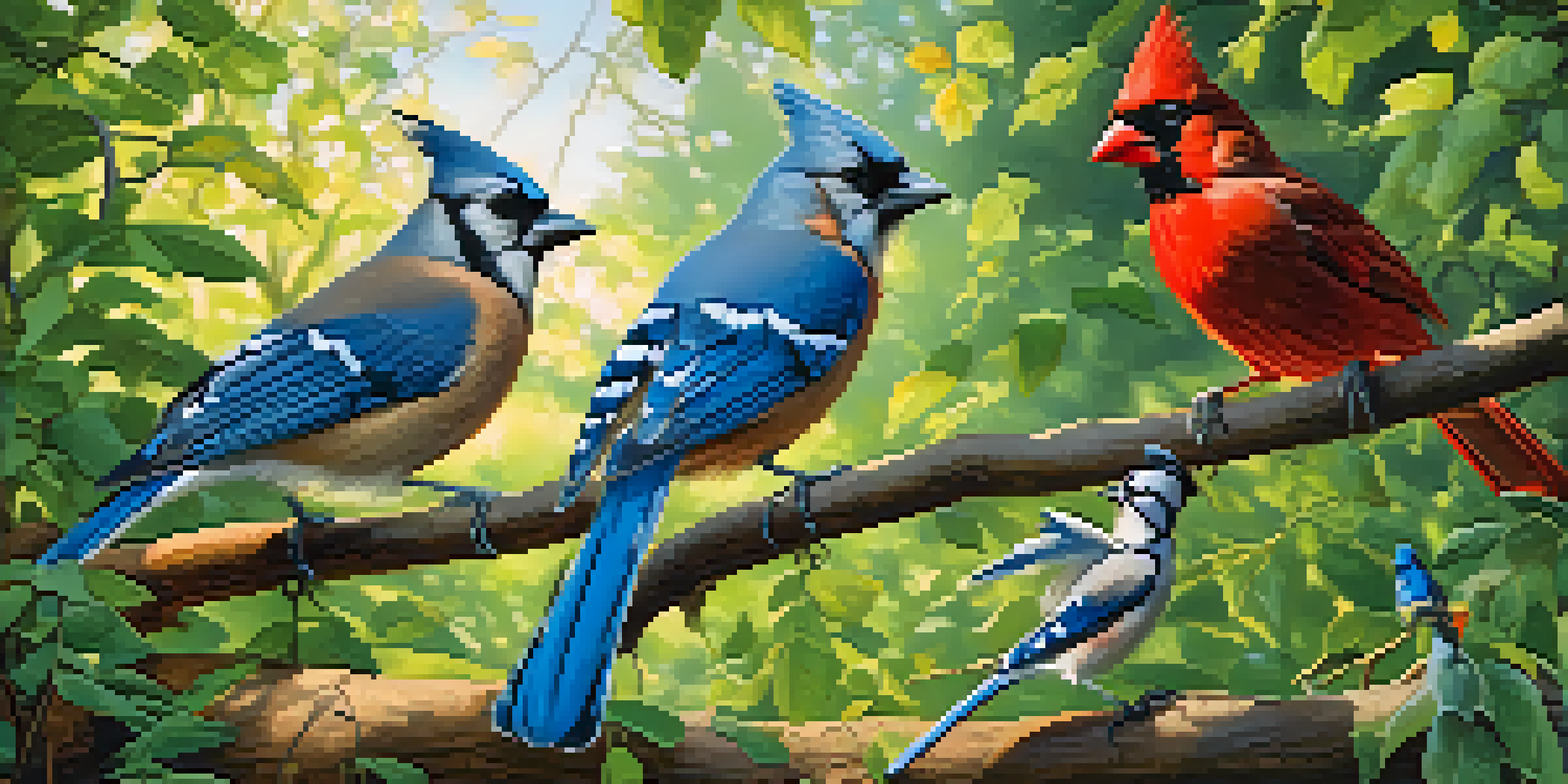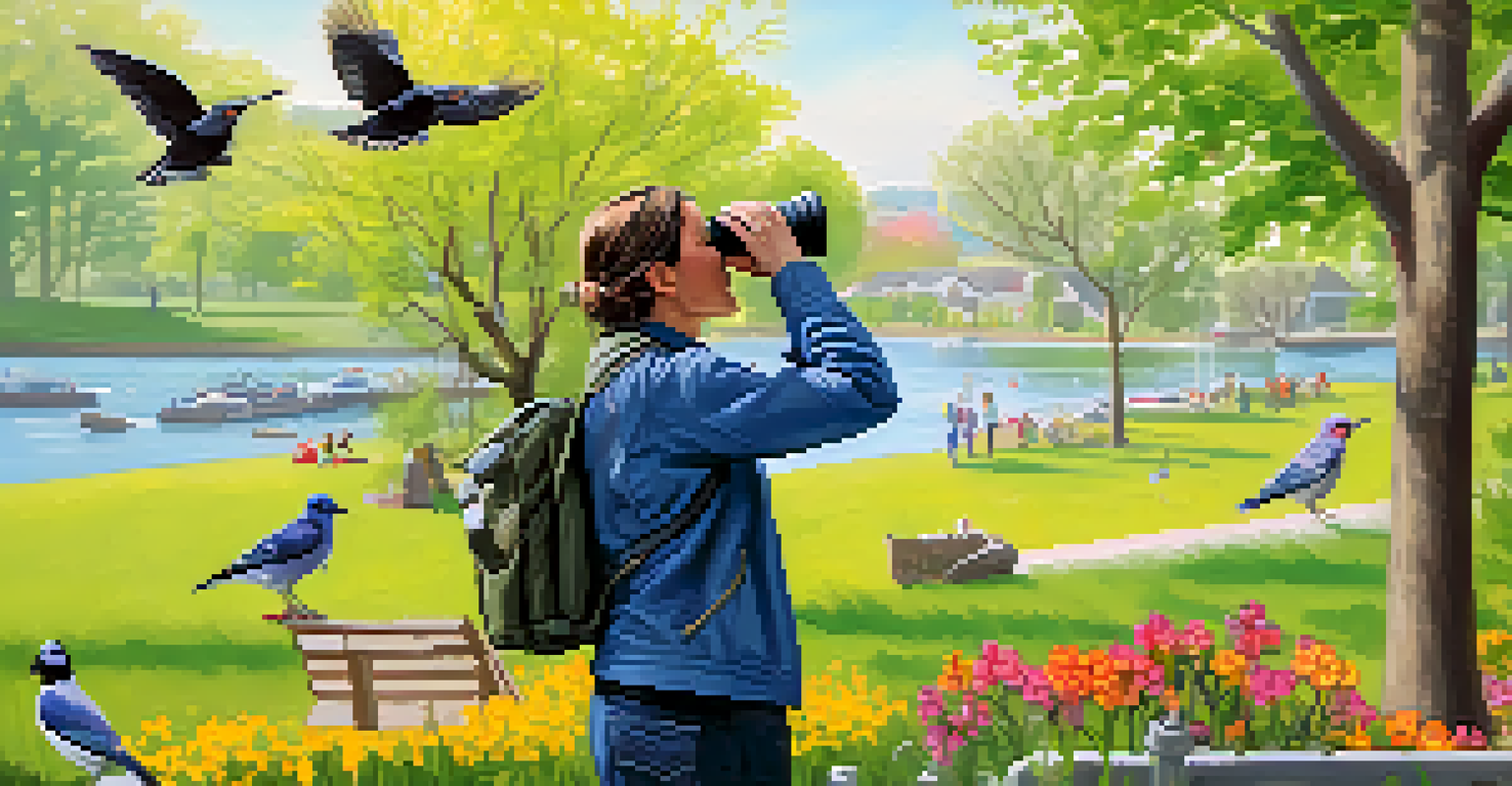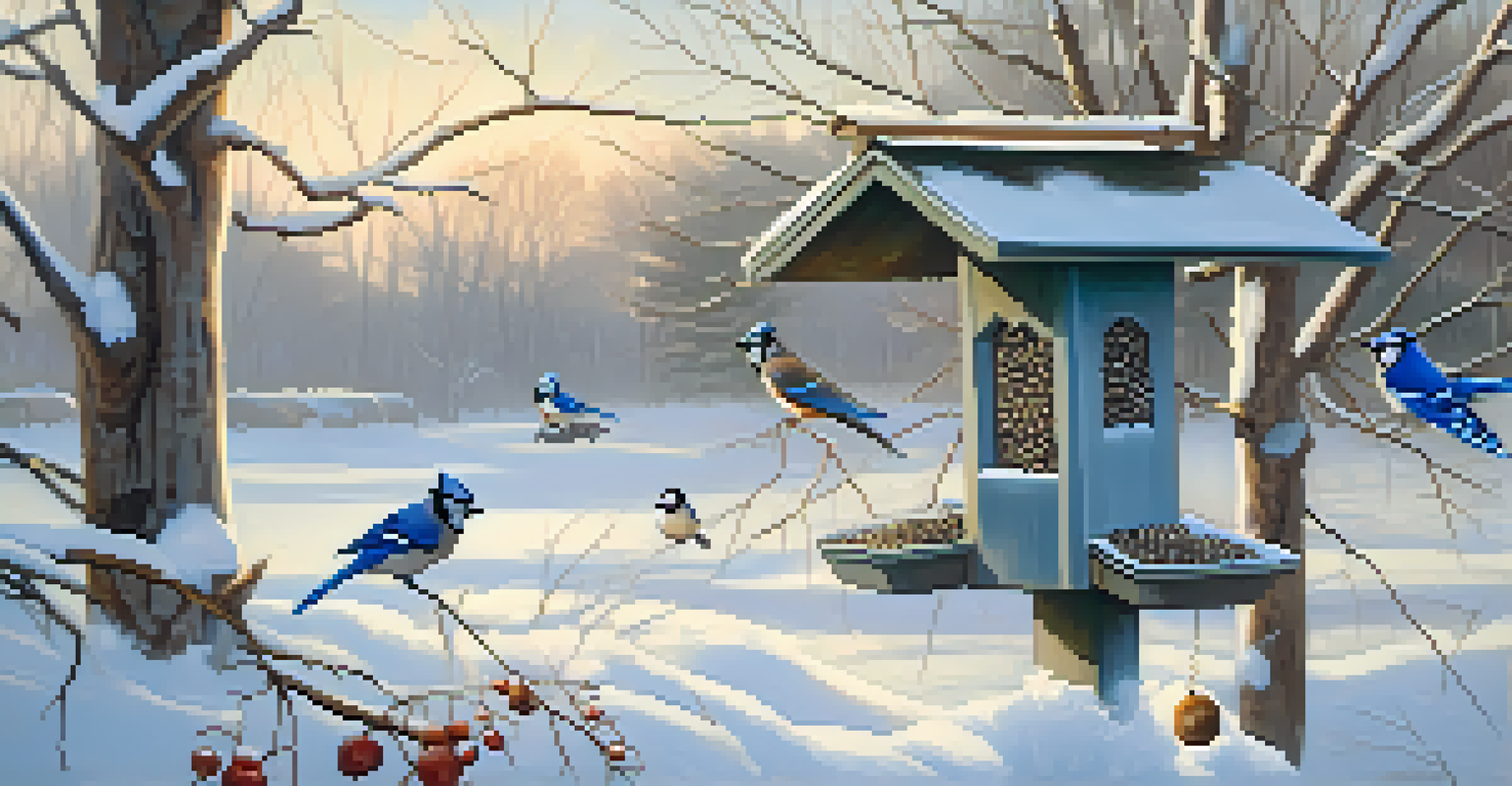How to Identify Common Birds by Sight and Sound

Understanding Bird Identification Basics
Birdwatching can be an incredibly rewarding hobby, especially when you learn to identify birds by sight and sound. It opens up a whole new world of appreciation for nature. Understanding the basics of bird identification is the first step in this fascinating journey.
In every walk with nature one receives far more than he seeks.
Start by familiarizing yourself with some key characteristics of birds, such as size, shape, color, and behavior. Each bird species has unique traits that can help you recognize them. For example, the distinctive red breast of the American Robin makes it easily identifiable among others.
Additionally, pay attention to their habitats and the time of year. Different birds prefer different environments, and some are migratory. Knowing where and when to look can drastically improve your chances of spotting them.
Using Binoculars for Better Viewing
One of the best tools for birdwatching is a good pair of binoculars. They allow you to see birds up close without disturbing them in their natural habitats. When selecting binoculars, look for a magnification of 8x or 10x and a wide field of view.

Once you have your binoculars, practice using them to spot birds in your backyard or local park. Start by focusing on stationary birds, which are easier to observe. Remember to keep your movements slow and steady to avoid scaring them away.
Bird Identification Basics
Understanding key characteristics like size, shape, and color is essential for recognizing different bird species.
As you gain confidence, try tracking birds in flight. This can be more challenging, but it’s a great way to observe their wing patterns and colors. With time, you’ll find that you’re not just looking for birds; you’ll be observing their behaviors and interactions as well.
Learning to Recognize Bird Calls
Bird calls and songs are crucial for identification, as many species are more heard than seen. Each bird has its unique sound, which can often be the easiest way to tell them apart. Start by listening to common birds in your area and try to memorize their calls.
Birds are indicators of the environment. If they are in trouble, we know we'll soon be in trouble.
A simple way to practice is to use bird identification apps or websites that feature audio samples. Play the sounds repeatedly until you can recognize them without assistance. For instance, the cheerful song of the Song Sparrow is often confused with others but has a distinct rhythm.
Joining a local birdwatching group can also enhance your learning experience. Many enthusiasts will share their knowledge, and you may be able to hear new bird calls in the wild, making the learning process more engaging.
Using Field Guides to Aid Identification
Field guides are invaluable resources for both novice and experienced birdwatchers. These books or apps typically include detailed descriptions, illustrations, and range maps to help you identify birds. Look for a guide that focuses on your region for the best results.
When using a field guide, pay attention to the illustrations and descriptions of similar species. Often, birds can look alike, so subtle differences in color or size can be the key to proper identification. For example, the difference between a House Finch and a Purple Finch can sometimes be just a matter of color tones.
The Role of Binoculars
Using binoculars with appropriate magnification enhances your ability to observe and identify birds in their natural environment.
Make it a habit to carry your field guide along with you during your birdwatching excursions. Over time, you’ll find that you start to remember the information, making it easier to identify birds on the fly.
The Importance of Birdwatching Etiquette
As you embark on your birdwatching journey, it's important to remember the principles of etiquette. Respect for wildlife and their habitats ensures that future generations can enjoy the same experience. Always maintain a safe distance from birds, especially during nesting season.
Avoid playing bird calls in the wild, as this can lead to stress for the birds and disrupt their natural behaviors. Remember, the goal of birdwatching is to observe without interference. Bringing along a friend can also help keep noise levels down and make the experience more enjoyable.
Educating yourself about the specific needs of local bird species can also enhance your experience. For instance, knowing which birds are endangered can influence how you interact with them, ensuring you're a responsible birdwatcher.
Seasonal Changes and Bird Behavior
Birdwatching isn’t just a warm-weather activity; different seasons bring unique opportunities to see various species. For example, many migratory birds return in spring, making it an exciting time for birdwatching. Understanding seasonal changes in bird behavior can greatly enhance your identification skills.
In winter, look for birds that come to feeders, as many species rely on supplemental food sources during this time. Common visitors like Blue Jays and Chickadees are often easier to spot, as they forage for seeds and nuts.
Birdwatching Etiquette Matters
Practicing birdwatching etiquette, such as maintaining a safe distance and avoiding disturbances, is crucial for respecting wildlife.
Summer is perfect for observing nesting behaviors, while fall is a great time to witness migration. Each season offers its own distinct beauty and challenges, allowing you to continually refine your birdwatching skills.
Capturing Your Birdwatching Experiences
Keeping a birdwatching journal can greatly enhance your experience. Documenting your sightings helps you remember the birds you've seen, their behaviors, and the locations where you spotted them. This can also aid in tracking seasonal changes over time.
You might also consider sketching the birds you observe. Drawing can help you pay closer attention to details, reinforcing your identification skills. Even if you’re not an artist, this practice can make your birdwatching experience more memorable.

Additionally, sharing your sightings with local birdwatching groups or online communities can foster a sense of connection. It’s a great way to learn from others, exchange tips, and celebrate your shared passion for birds.